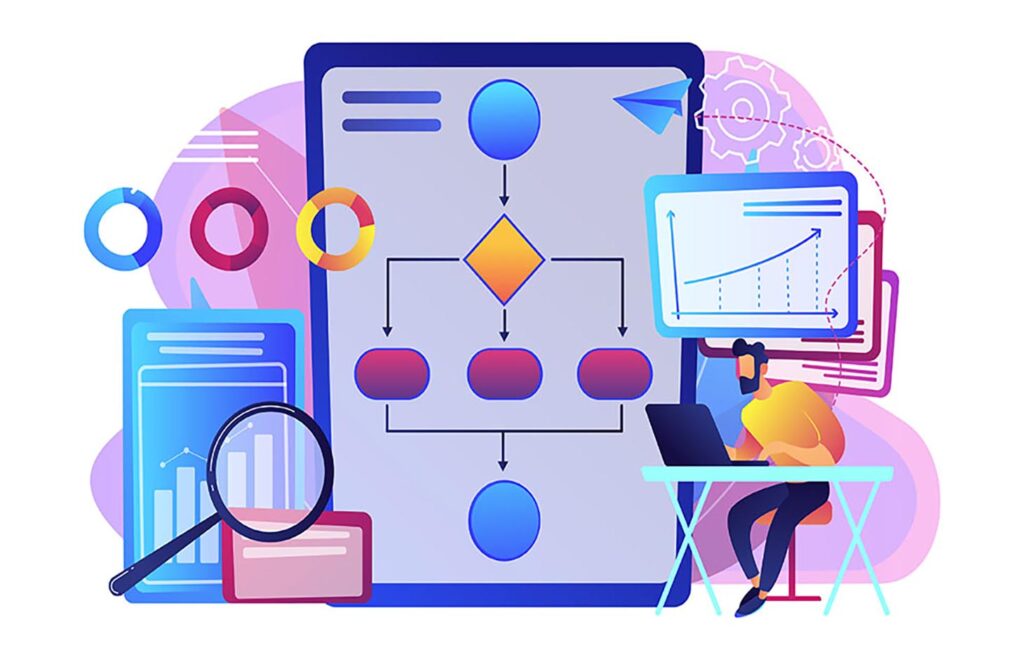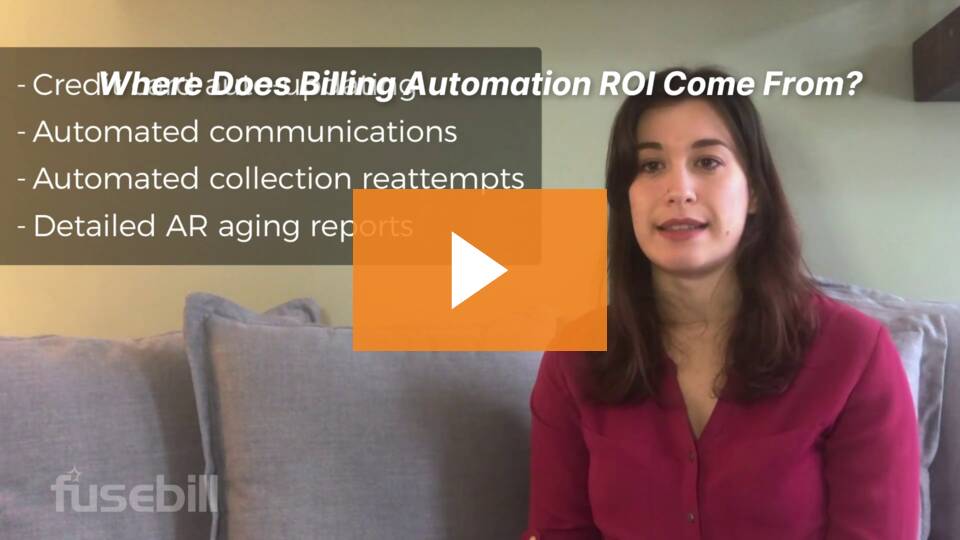Growing pains are common for many rapid-growth SaaS and subscription businesses. You may be noticing certain processes that worked just fine in the startup phase are becoming less and less manageable as you scale.
Handling your recurring billing operations manually is likely to be one such growing pain. You might find:
- getting invoices out when you only had a handful of customers used to take a day, whereas now it’s taking weeks,
- errors are becoming increasingly common both on invoices and in customer and payment data, and
- you’re leaking revenue due to unpaid invoices, taxation errors, and/or accidental underbilling.
So how do you fix this? Well, there are software solutions on the market that enable you to automate your recurring payments, billing, and other related tasks.
Where Does Billing Automation ROI Come From?
But the reality is any software purchase for your subscription-based business is a big deal, and a recurring billing system is no different. You don’t want to just blindly make a purchase and hope for the best—you need to make sure it’ll deliver the ROI you need.
Below are five of the most frequently asked questions from businesses that are considering automating their subscription billing processes, along with answers that will help put your mind at ease.
We recently hosted a webinar on this same topic. Watch the on-demand recording here!
1. How does my business benefit from automating my recurring billing process?
Humans have limitations. Even if you have the smartest, most capable humans on your billing team, they’re limited both by the amount of time in which they can complete tasks and in their ability to complete these tasks perfectly.
By the time most recurring billing businesses start looking for billing automation software, their billing processes have already become unmanageable, and they’re seeing various issues stemming from this human limitation, such as billing clerks working overtime or making manual errors. These issues unsurprisingly inhibit your business’s ability to scale efficiently.
Human resources software solution provider JustLogin was experiencing these same problems when it handled its recurring billing manually—its billing team was clocking in two weeks of overtime every month to get invoices out on time.
But after switching to a modern subscription billing platform, it reduced its time spent billing by a whopping 90%. Not only that, but the business was able to scale three times over without needing to increase its number of employees.
The case for invoicing automation is easy enough to make. But that’s not all an automated subscription management software solution offers…
2. How do I pick the right solution for my business?
You likely have more billing-related needs than just those addressed by the core features explained above. And the right automated billing solution will be able to meet all of them.
First of all, the software’s level of catalog flexibility is key. A flexible catalog will empower you to:
- offer promotions and coupons,
- create discounts and special pricing at either the customer or the overall level, and
- easily add new products or packages or change the pricing of existing ones.
Meanwhile, it should also comply with GAAP accounting regulations, as well as PCI and SOC2 security standards.
All these features combine to create a lot of power in this one software solution. But if the user interface isn’t intuitive enough for your billing team to use, the powerful features become useless—so look for a solution that also prioritizes usability.
3. How would recurring billing software fit in with my current tech stack?
Billing doesn’t happen in a vacuum, so your solution shouldn’t be a standalone piece of software.
A common pain point for many businesses with manual-heavy billing processes is this idea of ‘swivel-chair accounting’ or jumping from one software to another to make sure all information is the same across the board. And of course, this is another process that wastes a lot of time and is prone to human error.
A subscription billing solution should act as a bridge between the other solutions in your tech stack, syncing data back and forth as appropriate. It should:
- sync data from your CRM to create new accounts with accuracy and ease,
- send key data—such as account status, invoice payment status, etc.—back to your CRM,
- sync with your accounting software to push important financial data to streamline month-end close,
- integrate with other solutions you use, from taxation to internationalization, and
- work seamlessly with your payment gateway to process credit card payments—but more on this later.
These integrations save your billing team precious time and ensure key data is accurate and identical across your entire fintech stack.
And if it doesn’t natively integrate with all the other solutions you use, it should offer a powerful API that enables it to talk to any other software out there, with a little setup work. This API can also integrate with your own software product to enable easy variable recurring billing.
4. How does recurring billing software improve my financial reporting abilities?
Working with data is important when strategizing for your subscription business. In fact, according to a PwC study, data-driven businesses tend to make 3X better decisions than those which don’t use data in the decision-making process.
With the SaaS and recurring billing model, there’s no shortage of metrics to pull important data from. And a robust billing automation solution helps capture that data.
There are the metrics every business needs, such as sales, cash, and revenue, but also SaaS-specific metrics, like churn, expansion and contraction MRR, and so on.
You’ll also want a system that allows you to analyze your recurring revenue from a current, historic, and future forecasted perspective, to understand how you’ve performed in the past and get an idea of what you can expect to bill in the future.
One last powerful report for improving cash flow efficiencies: aging accounts receivable (AR) data.
You want your team to have access to an aging report where they can see your overdue receivables. The system should show you how likely you are to collect from these customers, how far overdue they are, and the AR balance on file.
You can break down those analytics by who owes you the largest payments or who’s most overdue. This is one tool in your arsenal that can help patch up revenue leakage.
5. How would recurring billing software integrate with my payment gateway?
We’ve already gone over the importance of finding billing software that integrates seamlessly with other solutions, but a solution that deeply integrates with your payment gateway—or better yet, has a gateway built right in—can help ensure optimal cash flow efficiency.
When the two systems are integrated and it’s time to take a customer payment, your billing system posts an invoice and calls out to your gateway to collect the funds from customers’ credit and debit cards on file. That’s it. No need for your team to reconcile invoices, post payments, or fiddle with your ledgers.
And, since the recurring payments processing happens automatically, it means your business gets paid sooner than if you were to do the work manually.
Another great feature? Many payment gateways offer credit card auto-updating, meaning they work with the major credit card brands to ensure you’re never losing customers to an expired payment method.
With these features all combined, your business gets paid faster, avoids late recurring payments, streamlines the process for your internal team, and simplifies the experience for the customer.
One piece of fintech can go a long way
When we’re looking at the reasons a subscription business may adopt a billing automation solution, the major benefits can be sorted into three categories:
- Creating efficient, error-free processes which have a positive impact on customer retention
- Improving the business’s cash flow by maintaining stable and continuous revenue
- Enabling business growth
Finding the right subscription billing software for your business is a big decision that absolutely requires thorough research. But overall, billing automation comes with so many benefits, the answer to the question ‘should I automate my recurring billing?’ will be a resounding ‘yes’.









